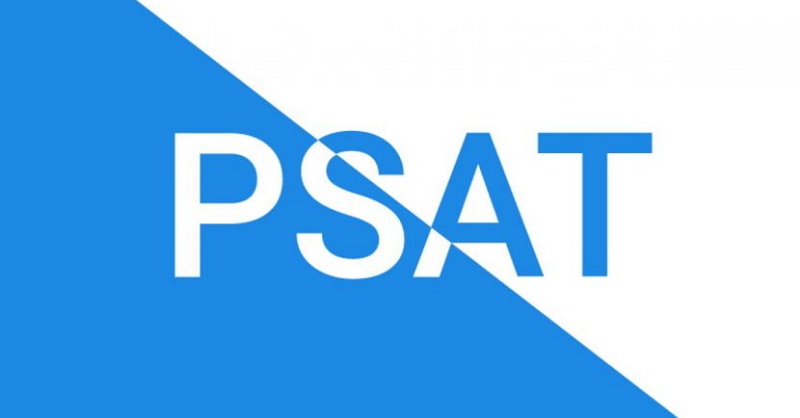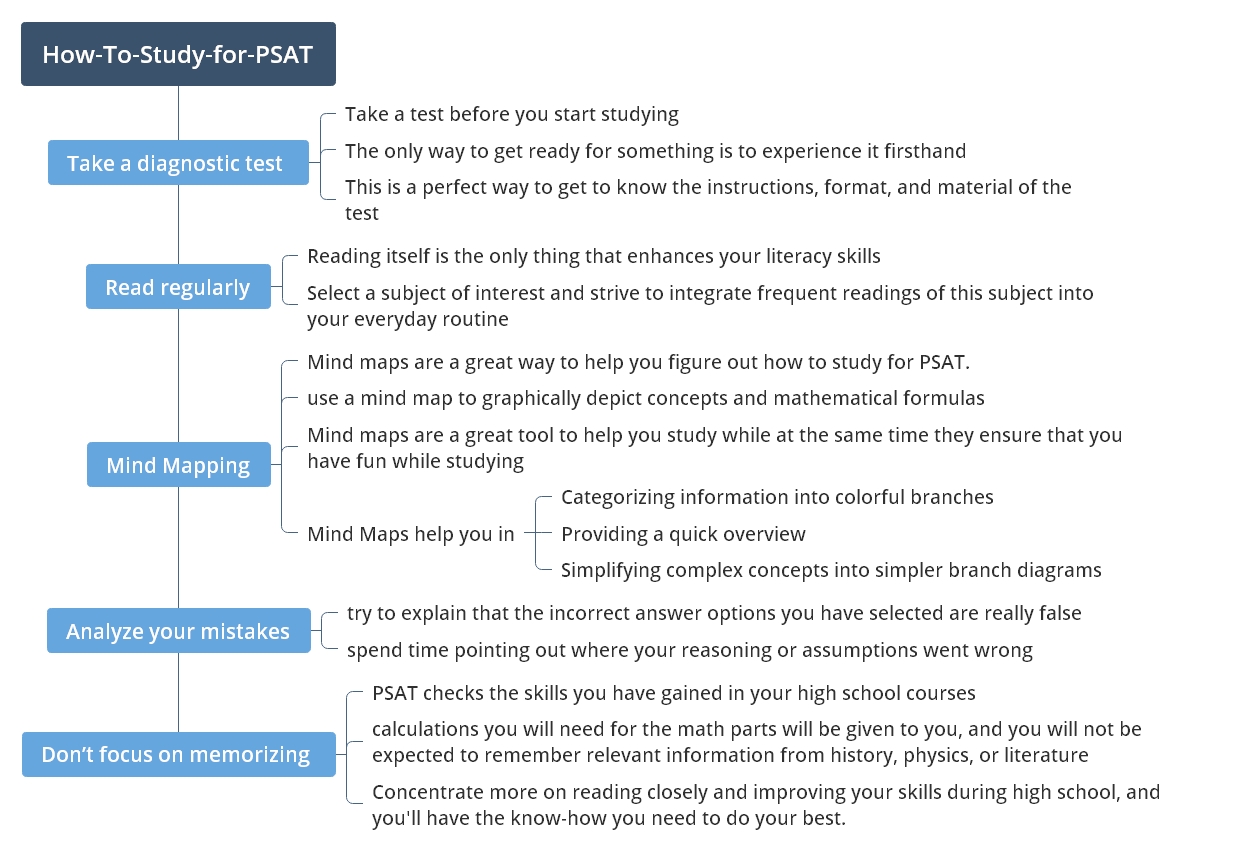Prep Guide: How to Study for The PSAT

PSAT is a precursor to the 10th and 11th graders in SAT. While this test is not as critical as the SAT, performing well can open up some opportunities.
According to the College Board, administrators of the PSAT, the best way to study is to take challenging coursework and learn the curriculum. In addition to your coursework, you can review and understand the primary content and function of the PSAT.
It is intended to prepare students to take the SAT by simulating a shorter version of the exam, introducing students to appropriate test content, and showing students where they need to change to meet their target score on the SAT.
1.1 The Sections in The PSAT Test
The PSAT is a 2-hour and 45-minute test with a total of 139 questions. The questions are grouped into three subject sections: mathematics, reading, and writing, and language.
- Reading Section: The reading segment requires you to read, interpret, and respond to multiple-choice questions about the passages and informational graphics;
- Writing and Language Section: The writing segment tests the comprehension of correct grammar and English by multiple-choice questions that enable you to revise and enhance written passages;
- Maths Section: The math section contains multiple-choice and grid-in problems addressing logic, problem-solving, and data analysis. You are permitted to use a calculator for some questions.

Source: Facebook
The PSAT is essentially an SAT with less daunting intent (it might get you scholarships, but it doesn't get you into college). There are occurrences of SAT themes. The difference is the higher-level material, particularly in math.
It has the same form of questions as the SAT, the instructions are all the same, and the spacing for each segment is somewhat close. There are, however, a few significant variations in length, ranking, and quality between them. Take a look at the comparison table given below.
| SAT | PSAT | |
| Total Length | 3 hours (or 3 hours 50 minutes with the optional essay) | 2-hours and 45-minutes |
| Difficulty Level | Comparatively SAT is more difficult | When compared to SAT, PSAT is slightly easier |
| Admission to college | Yes, SAT scores are important for college admissions | No, PSAT scores are not a college admissions factor |
The PSAT is a gateway to the SAT. Since the primary purpose of the PSAT is to train you for the SAT (hence its name, "Preliminary SAT"), the two measures have a lot of similarities. As a result, planning for PSAT will give you an early understanding of SAT material areas you need to improve and what techniques and methods fit well for you.
Your PSAT score will predict your SAT score. While the PSAT and SAT score scales vary, the PSAT score corresponds directly to the SAT score. The easiest way to study for PSAT is to have the bigger goal of scoring well on the SATs.
There are 5 tips to guide you to study for PSAT, it will be helpful if you follow one of them.

Source: EdrawMind
1. Take a diagnostic test
Take a test before you start studying. The only way to get ready for something is to experience it firsthand. It is a perfect way to get to know the test’s instructions, format, and material. You should also consider practicing the subject problems if you find you need more practice with a particular form of a question.
2. Read regularly
If you're not a regular reader, you need to start reading as soon as you can. Students who do not consistently develop and enhance their reading skills appear to have more problems with the PSAT and SAT Reading, and Writing ,amp; Language sections and are less likely to increase their reading scores in these classes.
Reading itself is the only thing that enhances your literacy skills. Select a subject of interest and strive to integrate frequent readings of this subject into your everyday routine.
Spending 15-20 minutes a day reading a book, newspaper, magazine, internet post, or other literature media will significantly improve your comprehension, speed, and retention — all skills that are key to achieving higher reading and writing ,amp; language scores.
3. Use Mind Maps
Mind maps are a great way to help you figure out how to study for PSAT. EdrawMind is an intuitive software that can help you create visually appealing mind maps. You can use a mind map to depict concepts and mathematical formulas graphically.
Mind maps are a great tool to help you study while at the same time, they ensure that you have fun while learning. Mind Maps help you:
- Categorizing information into colorful branches;
- Providing a quick overview;
- Simplifying complex concepts into more detailed branch diagrams.
4. Analyze your mistakes
When you study, try to explain that the incorrect answer options you have selected. Understand why a choice is wrong. Doing this will ensure that you go over all the practice exercises and questions for PSAT preparations. When you mark out the wrong answers and spend time understanding out where your reasoning or assumptions went wrong, you will increase your scores.
Bonus Tip: Remember to see if there are patterns in the errors. Recognizing the mistakes and realizing what you can do to correct them helps you stop making the same mistakes on the PSAT.
5. Don’t focus on memorizing
The PSAT checks the skills you have gained in your high school subjects. Any calculations or formulas in the math parts are the materials in the daily lessons. It will not be expected to remember relevant information from history, physics, or literature. The exam is conducted to test your comprehension and literacy skillsets.
The exam aims to gauge your reading comprehension skills, English grammar and structure, and Maths through algebra II; your PSAT scores will also provide a reasonable approximation of your baseline SAT score. Concentrate more on reading closely and improving your skills during high school, and you'll know what you need to do to deliver your best.
Don’t memorize concepts; instead, try to get to the roots of an idea. Doing this will help you retain information better.
Since the PSAT score itself isn't going to affect your college admissions decisions, it's crucial to make a decent effort on the exam: this way, you'll feel better with the test-taking process, and you'll know where you are with your results. Using your PSAT performance, you will be able to intelligently schedule your SAT planning, alleviate uncertainty, and increase your chances of success.
EdrawMind is an intuitive software and flexible mind mapping tool. It is designed to generate modern and visually appealing mind maps to learn how to study for PSAT. Combining various elements of your PSAT study into a mind map, EdrawMind lets you organize the ideas and concepts and create useful study mind maps.







